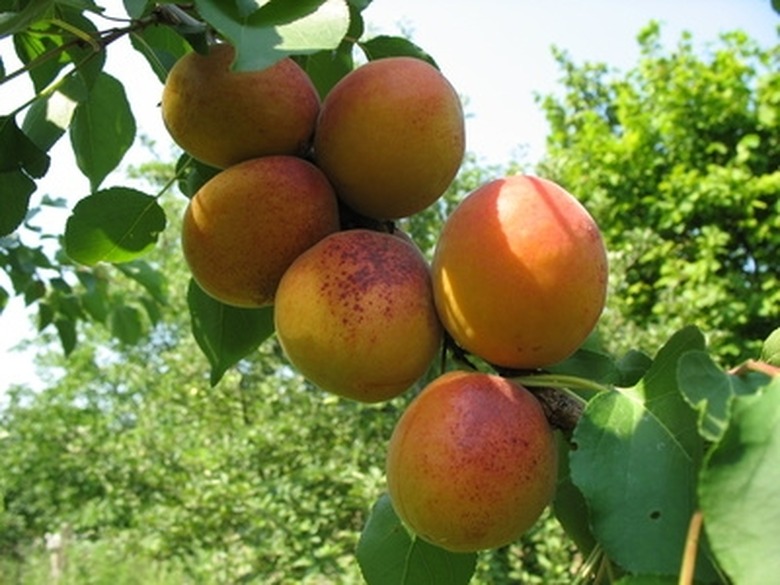How To Prune Apricot Trees In California
California apricots are plump and delicious. The size and quality of your apricots depend upon how well you care for your trees. Pruning your apricot trees correctly is one way to ensure that your trees produce large healthy apricots. Learn how to properly prune your California apricot trees so you too can harvest a great crop of fruit.
Step 1
Cut back your newly planted apricot tree to 30 inches tall. Cut off all the side shoots to one bud. Apply a coat of white latex paint to protect the tree from the sun. California's warm weather makes young apricot trees more susceptible to sunburn.
- California apricots are plump and delicious.
- Learn how to properly prune your California apricot trees so you too can harvest a great crop of fruit.
Step 2
Heavily prune your apricot tree while it is young. The tree should be kept fruitless for the first 3 years by cutting off the buds and shoots. This will increase the quality of the apricots in later years.
Step 3
Prune the tops of the vertical branches to expose more of the tree to the sun, encouraging proper tree development. Quality apricots are produced when the tree's branches are exposed to lots of sunlight.
Step 4
Cut off all branches bending down, and all branches growing down from a major scaffold limb.
Step 5
Take off all crossing branches. Also remove limbs, suckers and sprouts growing straight up, all dead or damaged wood, and old weak bud sprouts. Remove 20 percent of the previous years growth.
- Heavily prune your apricot tree while it is young.
- Quality apricots are produced when the tree's branches are exposed to lots of sunlight.
Apricot Trees Look Like In Bloom?
Flower buds begin to swell on apricot trees when those trees start to awaken from winter dormancy and before new leaves are on the trees. When the trees reach full bloom, they are more susceptible than previously to freezing weather, and a temperature at or below 22 degrees Fahrenheit can cause 90 percent of the flowers to die. Keeping the flowers dry helps to prevent fungal infections in the blooms and later on the fruits. After the blooms are pollinated, the petals fall off, leaving behind branches with little foliage and the pink-hued remains of the flowers' cores. The core bases grow as young apricot fruits develop. If a year's chill-hour requirement is at the high end of the range for a particular apricot variety, then those trees may have 80 percent of their flowers open fully at once.
Things Needed
- Gloves
- Pruning shears
- Pruning saw
- Long handled loppers
Warning
Most fruit trees require pruning during dormant winter months, but apricot trees also benefit from summer pruning.
Tip
Keep your apricot trees at a height that allows easy access to the fruit. If you need a ladder to pick your apricots, then your tree is too tall.
References
- California Polytechnic State University, Urban Forest Ecosystems Institute: Apricot
- University of California, Fruit and Nut Research and Information Center: Apricot Flower Development
- University of California, Marin Master Gardeners: Growing in Your Garden Now — Apricots
- University of California Integrated Pest Management Online: Apricot — Why Is the Bloom Season Important in an IPM Program?
